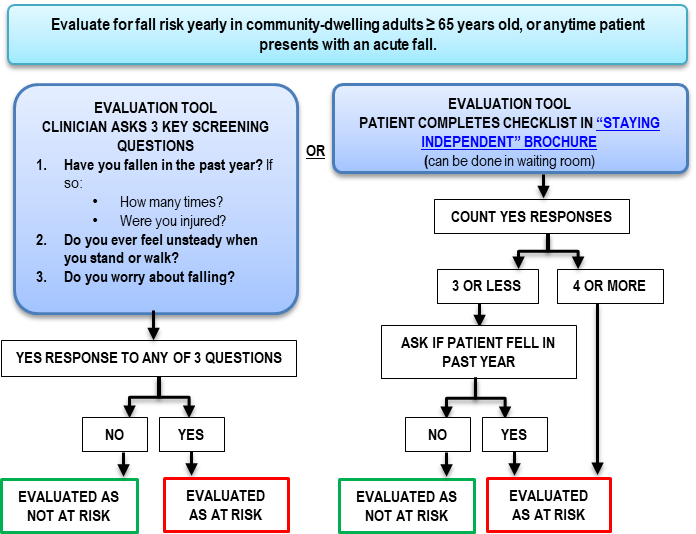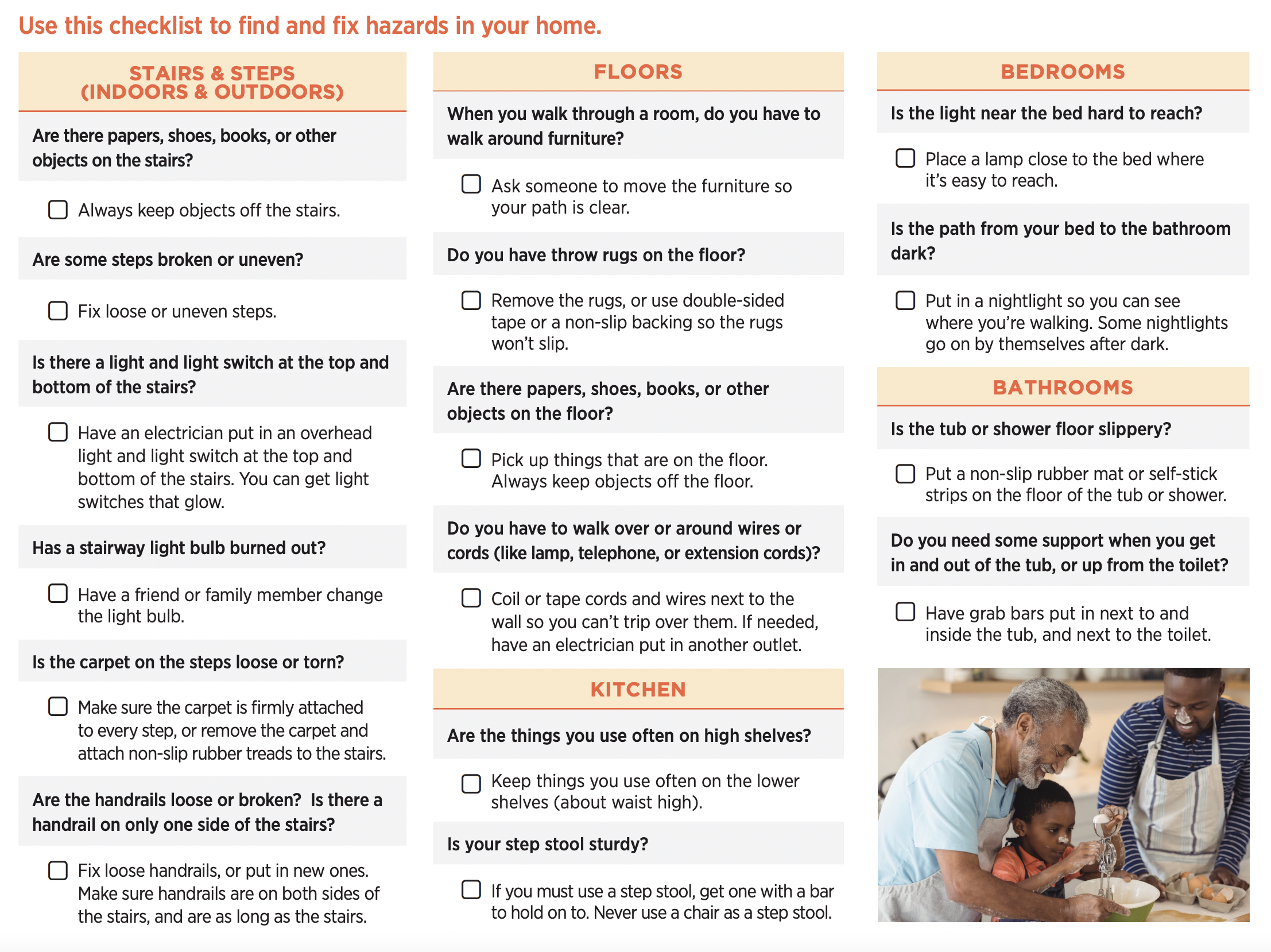5 Easy Facts About Dementia Fall Risk Described
5 Easy Facts About Dementia Fall Risk Described
Blog Article
The Greatest Guide To Dementia Fall Risk
Table of ContentsAll about Dementia Fall RiskFacts About Dementia Fall Risk RevealedThe 30-Second Trick For Dementia Fall RiskHow Dementia Fall Risk can Save You Time, Stress, and Money.
A loss risk evaluation checks to see exactly how likely it is that you will certainly fall. It is mostly provided for older grownups. The analysis generally consists of: This consists of a series of inquiries concerning your overall health and wellness and if you've had previous drops or problems with balance, standing, and/or walking. These tools test your strength, equilibrium, and gait (the means you walk).STEADI consists of testing, analyzing, and intervention. Interventions are suggestions that might lower your threat of falling. STEADI includes 3 steps: you for your risk of succumbing to your danger elements that can be enhanced to try to stop falls (for instance, balance issues, impaired vision) to minimize your threat of dropping by utilizing reliable methods (for instance, offering education and learning and resources), you may be asked a number of questions including: Have you fallen in the previous year? Do you really feel unstable when standing or walking? Are you stressed over dropping?, your copyright will certainly test your strength, equilibrium, and stride, using the following fall evaluation tools: This examination checks your stride.
If it takes you 12 secs or even more, it may indicate you are at higher threat for a fall. This test checks strength and balance.
The settings will get tougher as you go. Stand with your feet side-by-side. Move one foot halfway ahead, so the instep is touching the huge toe of your various other foot. Relocate one foot completely in front of the other, so the toes are touching the heel of your various other foot.
Getting The Dementia Fall Risk To Work
The majority of drops occur as an outcome of multiple adding variables; therefore, taking care of the risk of dropping starts with recognizing the aspects that add to fall danger - Dementia Fall Risk. Some of one of the most appropriate danger aspects include: Background of previous fallsChronic clinical conditionsAcute illnessImpaired gait and equilibrium, lower extremity weaknessCognitive impairmentChanges in visionCertain risky medications and polypharmacyEnvironmental variables can likewise increase the threat for drops, consisting of: Insufficient lightingUneven or damaged flooringWet or unsafe floorsMissing or harmed handrails and get barsDamaged or incorrectly fitted tools, such as beds, wheelchairs, or walkersImproper use of assistive devicesInadequate supervision of the people living in the NF, consisting of those that show aggressive behaviorsA successful fall danger monitoring program requires a detailed scientific analysis, with input from all participants of the interdisciplinary group

The treatment plan must additionally include treatments that are system-based, such as those that promote a risk-free setting (appropriate lights, handrails, order bars, etc). The performance of the interventions need to be reviewed periodically, and the treatment strategy modified as necessary to reflect adjustments in the fall risk evaluation. Implementing a loss danger administration system making use of evidence-based best method can reduce the occurrence of falls in the NF, while restricting the possibility for fall-related injuries.
The Buzz on Dementia Fall Risk
The AGS/BGS standard recommends evaluating all adults aged 65 years and older for autumn threat annually. This testing consists of asking patients whether they have actually dropped 2 or even more times in the previous year or looked for medical interest for an autumn, or, if they have not fallen, whether they really feel unsteady when strolling.
Individuals that have actually dropped once without injury needs to have their equilibrium and stride examined; those with gait Check Out Your URL or equilibrium irregularities should get added analysis. A history of 1 loss without injury and without stride or equilibrium problems does not necessitate additional assessment past ongoing annual loss threat screening. Dementia Fall Risk. An autumn threat evaluation is needed as part of the Welcome to Medicare examination

Excitement About Dementia Fall Risk
Recording a falls background is one of the quality signs for fall prevention and administration. Psychoactive medicines in specific are independent predictors this website of drops.
Postural hypotension can frequently be reduced by reducing the dose of blood pressurelowering drugs and/or stopping medications that have orthostatic hypotension as an adverse effects. Use above-the-knee support hose pipe and copulating the head of the bed boosted may additionally minimize postural reductions in high blood pressure. The advisable aspects of a fall-focused checkup are revealed in Box 1.

A Yank time greater than or equal to 12 secs recommends high autumn risk. Being unable to stand up from a chair of knee elevation without using one's arms suggests increased loss risk.
Report this page